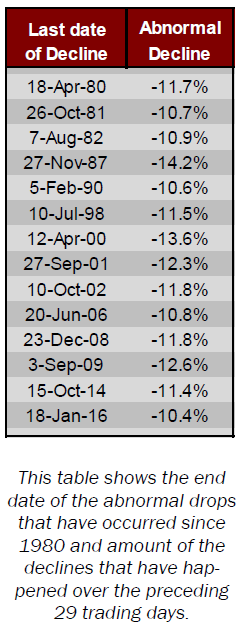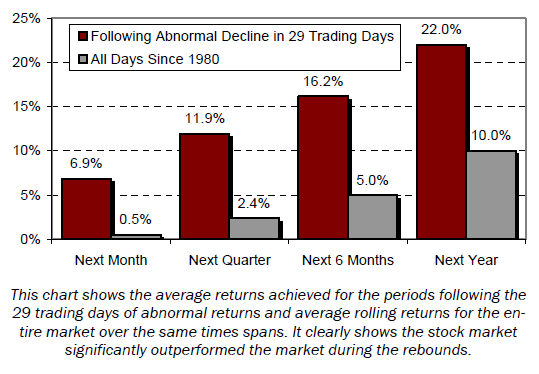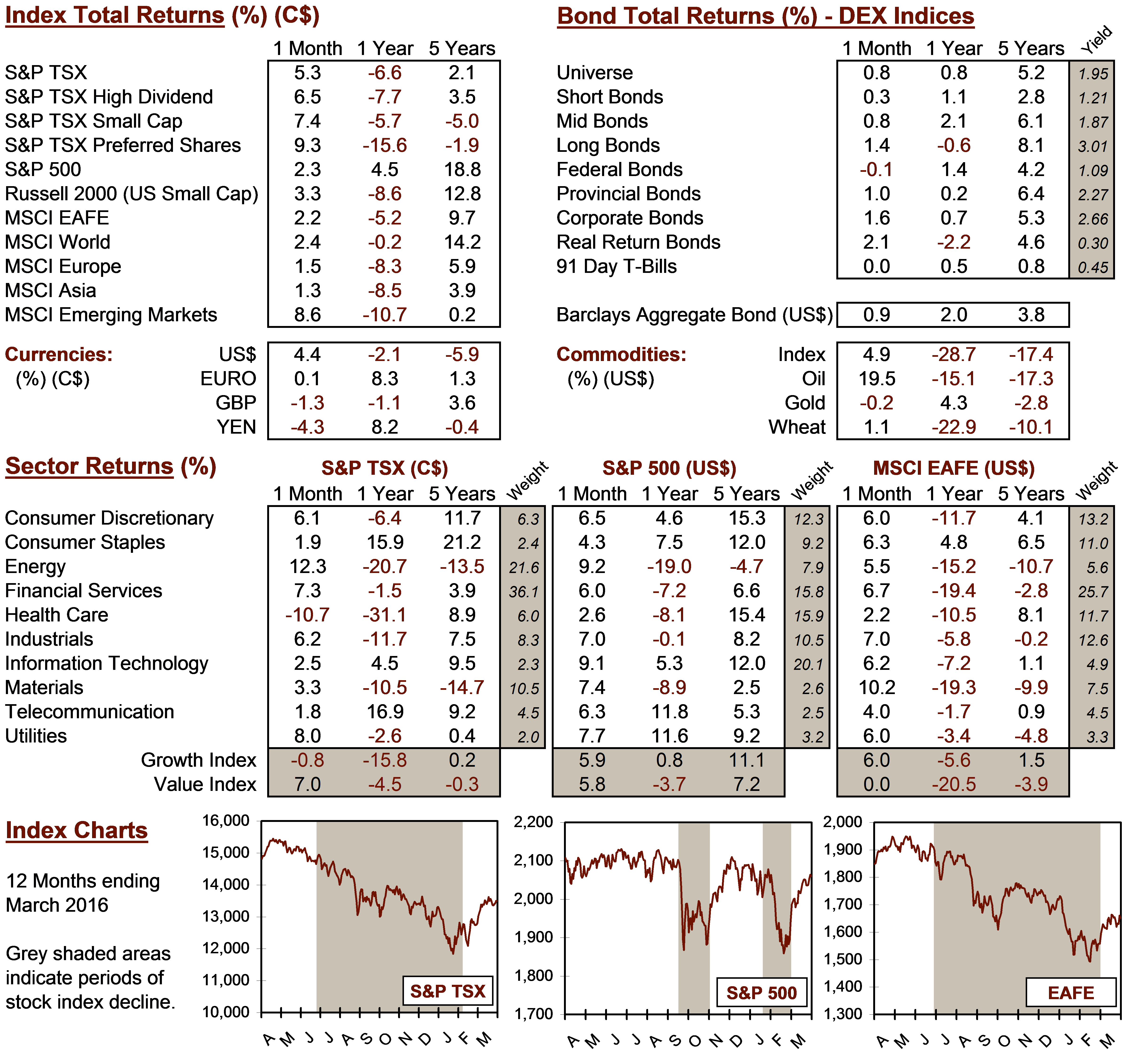Knowledge Centre
Sharp Declines Lead to Sharp Rebounds
April 2016
Dramatic and sudden declines in stock markets are both rare and painful initially. Many times they are the final straw for quite a few investors who decide it is time to throw in the towel and head for the sidelines. However, investors should keep in mind that this is likely not the onset of a new bear market, since most bear markets are not the result of sudden sharp drops but by the steady onslaught of one thing after another or in other words, a death by a thousand cuts. The Canadian stock markets abrupt decline in January 2016 was not a major bottoming; it was probably the start of something very, very good.


The tsunami of negative sentiment that engulfed the stock market earlier this year was almost palatable. No matter which way you turned, the common worry was “Oh no! Here we go again.” While the majority is not always incorrect, it is less likely that group think will truly achieve the anticipated result. When everybody thinks alike, everyone is likely to be wrong. Contrarians exist because they see things differently; they peel back the layers of conventional wisdom and look for reasons to disagree. Often what they uncover becomes very profitable for investors who stray from the herd.
History, as is often the case, provides answers when trying to decipher the impact of sharp drops in the stock market. For the purposes of this analysis we examined the historic data for the S&P/TSX Stock Index since 1980 and determined the rate of change for the stock market over rolling 29 day trading periods, which can be considered a short. The stock market generated an average rolling 29 day return of 0.8% with a standard deviation (a measure of volatility) of 5.6% over the past 36 years. To uncover the extreme actions of the stock market we looked for 2 standard deviation events (which only occur 5% or less of the time) or when the stock market declined by 10.4% (0.8% minus 2 times 5.6%) and more. While this occurred quite a few times, particularly in years of significant declines (1981, 1987, 2001 and 2008), we only incorporate the final day of the abnormal decline for the purposes of this analysis. The 14 days that comprise the dates these abnormal drops occurred are listed to the left.
Using these dates as the starting point to discover what happened in subsequent periods, we observed a truly different outcome than what would have been expected if the pessimism of the sharp drops was extrapolated forward. As the chart to the right shows, during the first month after the abnormally sharp decline occurs the stock market bounces back 6.9% versus the average rolling monthly period for the entire market of 0.5%. This trend of impressively sharp stock market rebounds continued through the next 3 month, 6 months and 1 year periods. The recovering stock market not only recouped its losses after 3 months, but it significantly outperformed the market as a whole during the entire recovery phase.
Of course, the rebound has not always occurred, but it happens more often than not. Most likely the stock market should continue to significantly rebound after the recent sharp drop. These results show that there is something genuinely worthwhile in contrarian analysis and that looking through the prevailing sentiment whether it is bullish or bearish can be a very rewarding endeavor.
MARKET DATA

This report may contain forward looking statements. Forward looking statements are not guarantees of future performance as actual events and results could differ materially from those expressed or implied. The information in this publication does not constitute investment advice by Provisus Wealth Management Limited and is provided for informational purposes only and therefore is not an offer to buy or sell securities. Past performance may not be indicative of future results. While every effort has been made to ensure the correctness of the numbers and data presented, Provisus Wealth Management does not warrant the accuracy of the data in this publication. This publication is for informational purposes only.
Contact Us
18 King St. East Suite 303
Toronto, ON
M5C 1C4
